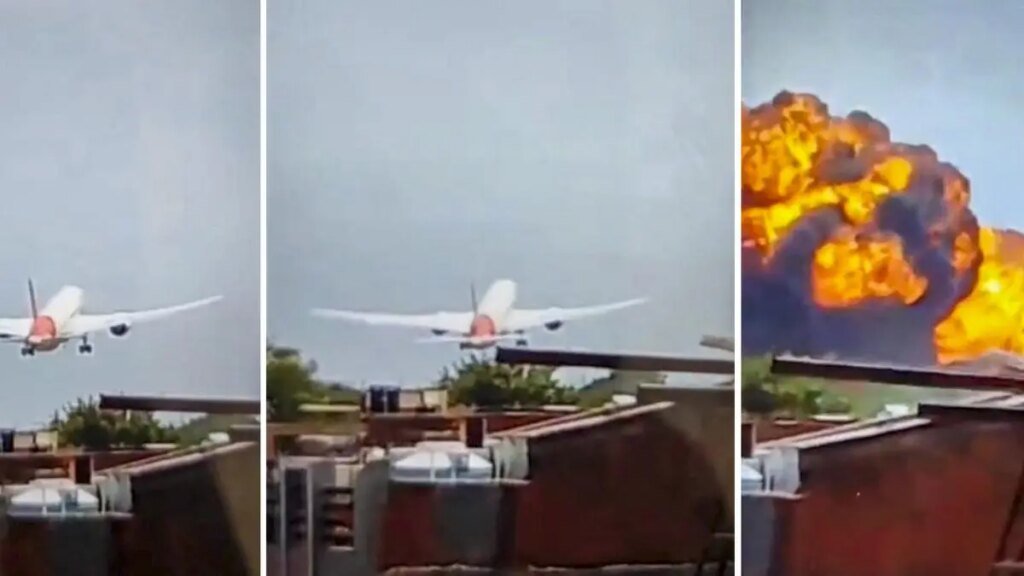Sudden engine shutdown caused Air India Ahmedabad-London flight crash: preliminary report

FILE PHOTO: A firefighter stands next to the crashed Air India Boeing 787-8 Dreamliner aircraft, in Ahmedabad, India, June 13, 2025. REUTERS/Adnan Abidi/File Photo
| Photo Credit:
ADNAN ABIDI
New Delhi
The preliminary report from the probe into the tragic crash of Air India’s Boeing 787-8 aircraft a month ago has revealed that both engines shut down seconds after takeoff.
The aircraft, operating flight AI171 from Ahmedabad to London Gatwick, hence crashed just after taking off from runway 23 at Sardar Vallabhbhai Patel International Airport, Ahmedabad, at 1.39 p.m. on June 12, 2025.
Air India stands in solidarity with the families and those affected by the AI171 accident. We continue to mourn the loss and are fully committed to providing support during this difficult time.
We acknowledge receipt of the preliminary report released by the Aircraft Accident…— Air India (@airindia) July 11, 2025
The crash led to the loss of 241 lives onboard and 19 on the ground.
As per the report prepared by the Aircraft Accident Investigation Bureau (AAIB), just three seconds after reaching its peak speed of 180 knots, both fuel control switches were found to have transitioned from ‘run’ to ‘cutoff’ mode, causing both engines to shut down mid-air.
However, the report did not cite the cause of this occurrence.
In fact, the cockpit voice recorder captured one pilot asking the other, “Why did you cut off?” followed by the other pilot’s reply, “I did not do so.”
Consequently, the ‘Ram Air Turbine’ (RAT) system deployed automatically. This is a backup system that is triggered by a loss of engine and electrical power.
According to the report, the forward flight data recorder confirmed that the engines began an automatic relight sequence within seconds of the shutdown.
The AAIB report pointed out that ‘engine 1’ began to recover, but ‘engine 2’ failed to relight.
On their part, the crew had tried to restart the engines, moving both fuel ‘cutoff’ switches back to “run” positions.
This move allowed ‘engine 1’ to begin the recovery process, however, ‘engine 2’ while relighting, couldn’t arrest its core speed deceleration.
Subsequently, the aircraft failed to gain altitude and crashed into the BJ Medical College hostel compound, which is located less than a nautical mile from the end of the runway.
The impact and ensuing fire destroyed the aircraft as well as damaged five surrounding buildings and scattered wreckage across a 1,000-foot by 400 foot area.
The cause of the uncommanded fuel cutoff is being seen as the potential root cause of the crash.
The report also ruled out other potential causes such as weather conditions, the aircraft’s airworthiness, pilots competencies, bird strikes, and theories around substandard fuel.
Nevertheless, the investigation is ongoing and is expected to yield a final report within 12 months.
Meanwhile, the report has not issued any immediate safety recommendations or airworthiness directives. It said that the aircraft was deemed airworthy, with valid certification and no critical defects reported.
The report also stated that the flight was crewed by an experienced captain with over 15,000 flying hours and a co-pilot with more than 3,000 hours.
It also pointed out that both pilots had received proper rest and medical clearance before the flight.
The ongoing investigation is being conducted by a team comprising experts from the AAIB, Indian Air Force, Hindustan Aeronautics Limited (HAL), and the US National Transportation Safety Board (NTSB). Experts from Boeing and GE have also been assisting in the investigation.
Published on July 12, 2025




